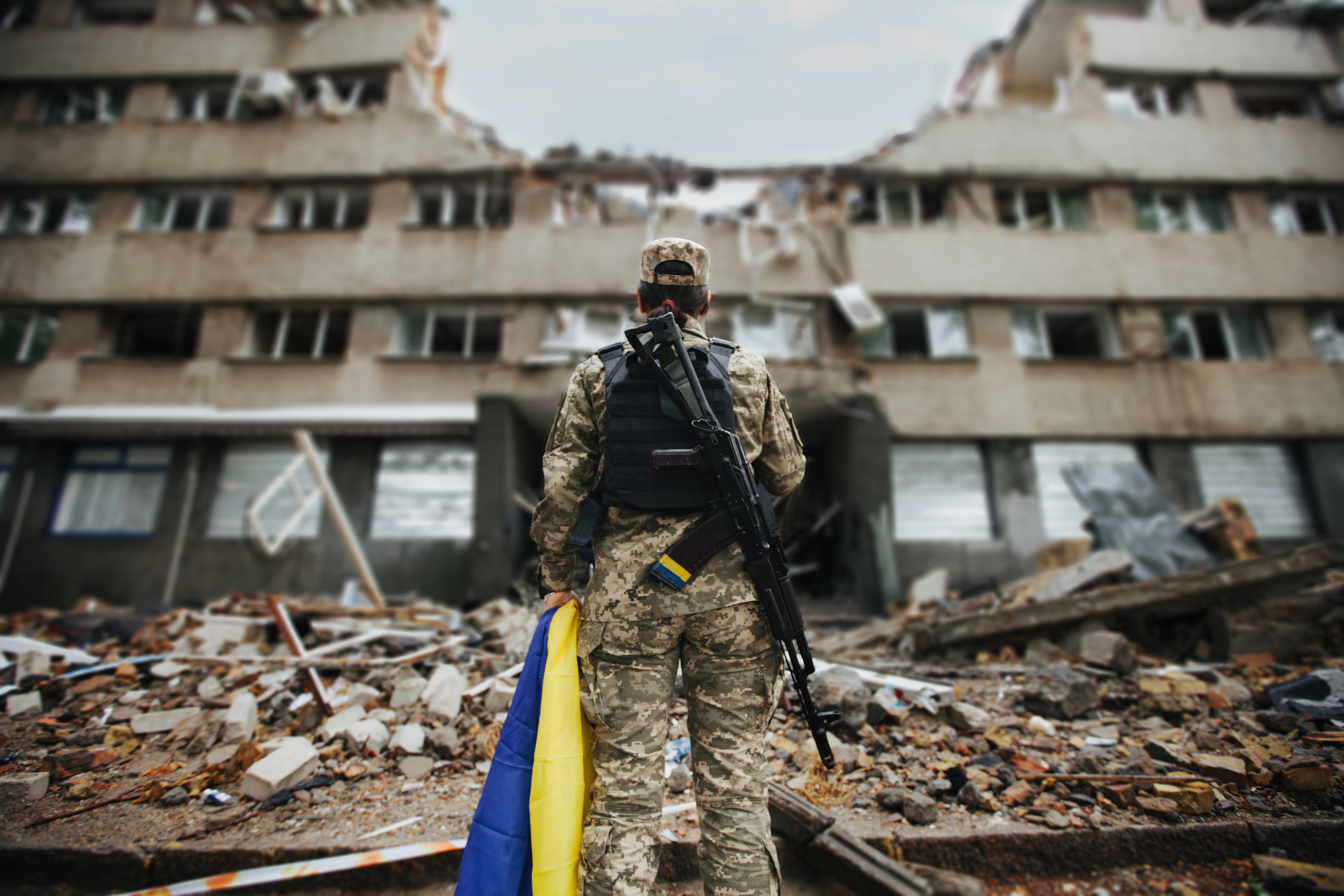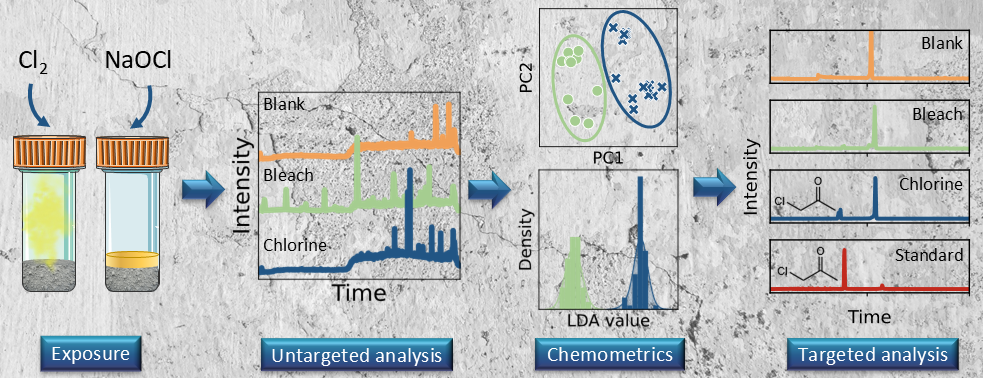
Chlorine gas (Cl2) is still being used as a chemical weapon in modern war zones. After an attack with this toxic chemical, verifying its use is challenging due to its reactivity and rapid evaporation. We found new markers that are characteristic for chlorine gas exposure and can be detected in various types of concrete. These markers were not present when concrete was exposed to other chlorinating agents, such as household bleach.
"Verifying its use is challenging due to its reactivity and rapid evaporation."
These selective markers can be used to provide valuable intelligence information regarding the applied chlorinating agent. For instance, this research can help forensic investigators when there is more than one possible explanation. Ultimately, well-validated models could facilitate forensic classifications for war crime investigations in the International Criminal Court.
